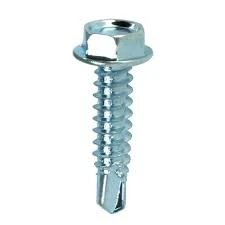plastic expansion nail plugs
Understanding Plastic Expansion Nail Plugs A Comprehensive Guide
Plastic expansion nail plugs, often referred to simply as wall plugs or rawl plugs, are essential components in the construction and DIY toolkit. These small yet versatile devices are crucial for securely fastening objects to walls, ceilings, and other surfaces, especially when dealing with materials that do not have sufficient strength to hold screws directly, such as drywall or masonry. This article delves into the functionality, types, applications, and installation tips for plastic expansion nail plugs.
What Are Plastic Expansion Nail Plugs?
Plastic expansion nail plugs are cylindrical devices made of durable plastic, designed to expand when a screw is driven into them. They create a secure anchor point in the wall, redistributing the weight of the attached object across a larger area. This is particularly important in soft materials where standard screws could easily pull out, causing a failure in the attachment.
Types of Plastic Expansion Nail Plugs
There are several types of plastic expansion nail plugs available in the market, each suited for specific applications
1. Standard Wall Plugs These are the most common type used for lighter items such as picture frames and small shelves. They usually come in various sizes to accommodate different screw gauges.
2. Heavy-Duty Plugs Designed for heavier applications, these plugs often feature a greater expansion capability and can support more weight. They are ideal for fixing shelves, cabinets, and other substantial fixtures.
3. Hollow Wall Anchors Used mainly in drywall applications, these anchors provide extra support. They function by expanding behind the wall surface, making them perfect for heavier loads in hollow walls.
4. Specialty Plugs Some plugs are tailored for specific needs, like those designed for use in concrete or brick. These may have additional features or materials that enhance their performance in tough environments.
Applications of Plastic Expansion Nail Plugs
plastic expansion nail plugs

The uses of plastic expansion nail plugs are virtually limitless. They are commonly found in both commercial and residential settings
- Home Decoration Hanging artwork, mirrors, and decorative shelves. - Furniture Assembly Securing bookcases, cabinets, and other furniture items. - Construction Projects Installing fixtures like curtain rods, blinds, and chandeliers. - Outdoor Usage Fastening outdoor furniture, lights, or decor to walls or fences.
How to Install Plastic Expansion Nail Plugs
Installing plastic expansion nail plugs is a straightforward process that requires minimal tools. Here’s a step-by-step guide
1. Select the Right Size Choose a plug that matches the size of your screw and is appropriate for the weight of the object you’re hanging.
2. Prepare the Wall Use a drill to create a hole in the wall. The hole should be slightly larger than the diameter of the plug. For heavier plugs, ensure the hole depth accommodates the entire plug.
3. Insert the Plug Gently push the plastic expansion nail plug into the hole until it’s flush with the wall surface. If it’s snug, lightly tap it with a hammer for better insertion.
4. Insert the Screw Using a screwdriver, insert the screw into the plug. As the screw tightens, the plug will expand and grip the wall securely.
5. Test the Stability Finally, after installation, apply a small amount of pressure on the attached item to ensure everything is firmly in place.
Conclusion
Plastic expansion nail plugs are indispensable tools that offer a reliable solution for a wide variety of fastening needs. Understanding their types, applications, and installation methods can significantly enhance your ability to tackle project after project, whether at home or in professional settings. With the right techniques, these small components can provide the support necessary to secure your belongings safely.
-
Weatherproof Plastic Expansion Anchors for OutdoorNewsJun.06,2025
-
Sustainability in the Supply Chain: Eco-Friendly TEK Screws ProductionNewsJun.06,2025
-
Load-Bearing Capacity of External Insulation FixingsNewsJun.06,2025
-
Double Head Bolts: Enhancing Efficiency in Industrial MachineryNewsJun.06,2025
-
Corrosion Resistance in Chipboard Screws: Coatings for Wholesale DurabilityNewsJun.06,2025
-
Butterfly Toggle Bolts : Enhancing Structural ResilienceNewsJun.06,2025
